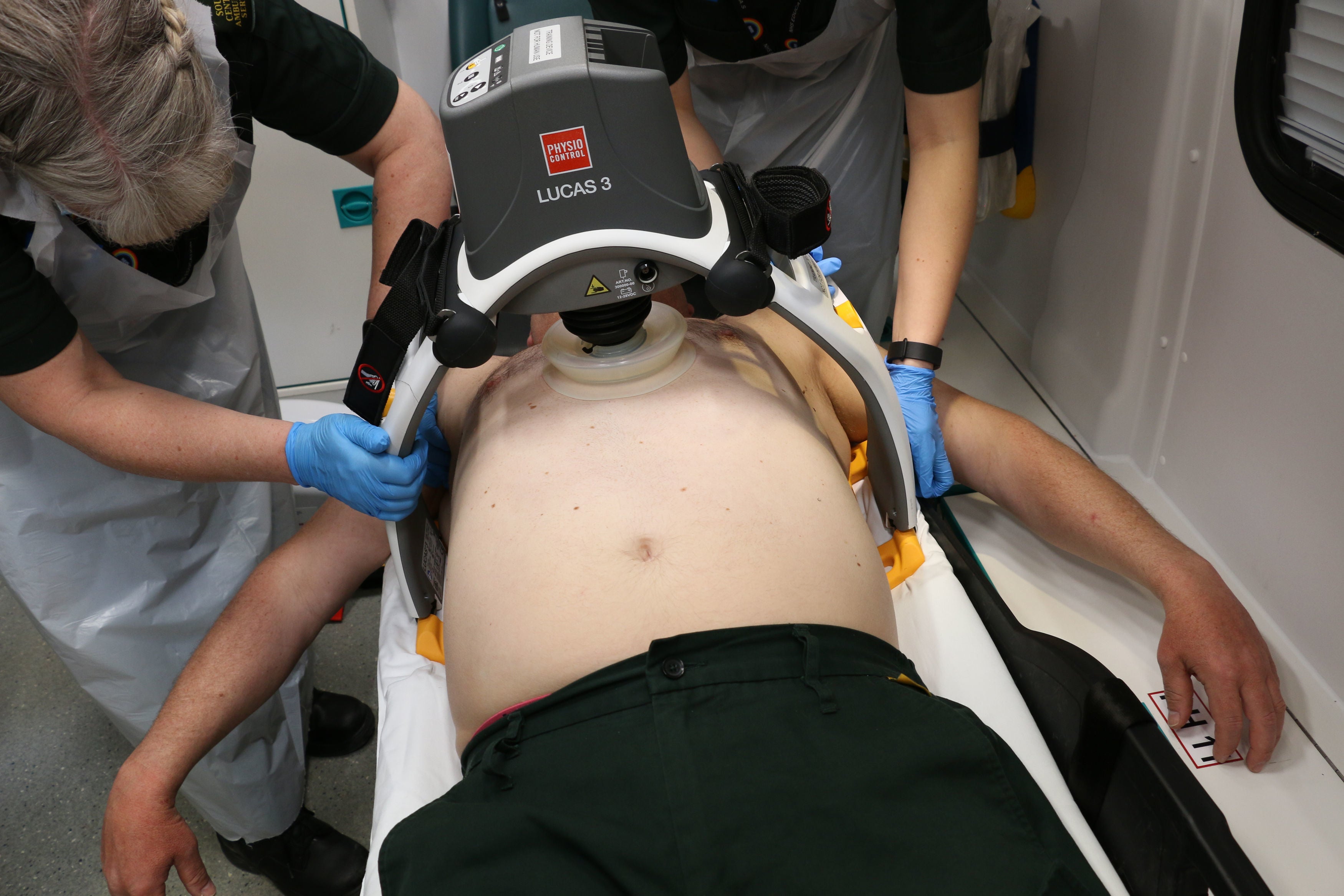‘Robot paramedics’ carry out chest compressions on patients in ambulances
South Central Ambulance Service the first in the UK to deploy the devices, which can free up human medics to provide other treatment

Your support helps us to tell the story
From reproductive rights to climate change to Big Tech, The Independent is on the ground when the story is developing. Whether it's investigating the financials of Elon Musk's pro-Trump PAC or producing our latest documentary, 'The A Word', which shines a light on the American women fighting for reproductive rights, we know how important it is to parse out the facts from the messaging.
At such a critical moment in US history, we need reporters on the ground. Your donation allows us to keep sending journalists to speak to both sides of the story.
The Independent is trusted by Americans across the entire political spectrum. And unlike many other quality news outlets, we choose not to lock Americans out of our reporting and analysis with paywalls. We believe quality journalism should be available to everyone, paid for by those who can afford it.
Your support makes all the difference.A robot paramedic is to be used for the first time to carry out chest compressions on ambulance patients to free up the emergency team who can perform other vital treatments.
The device is known as LUCAS 3 and is able to deliver consistent, high-quality CPR chest compressions whilst the patient is on their journey to hospital. CPR is essential to maintaining oxygen levels in the body and flow of blood when someone is no longer breathing.
South Central Ambulance Service (SCAS) is the first ambulance service in the country to use the robots, which cost about £12,000.
An SCAS spokesman said: “Once paramedics arrive and begin CPR or take over from bystanders who may have initiated it, the transition from manual compressions to LUCAS can be completed within seven seconds, ensuring continuity of compressions.”
The system works by using wireless Bluetooth connectivity, which allows it to configure the compression rate, depth of compression and alerts specific to an organisation’s resuscitation guidelines.
Data of the event can also be collected which can be reviewed at a later date.
Dr John Black, medical director at SCAS, said: “We know that delivering high quality and uninterrupted chest compressions in cardiac arrest is one of the major determinants of survival to hospital discharge but it can be very challenging for a number of reasons.
“People can become fatigued when performing CPR manually which then affects the rate and quality of compressions, and patients may need to be moved from difficult locations, such as down a narrow flight of stairs, or remote places which impedes the process.”
Dr Black went on to explain that these devices don’t “fatigue or change” their delivery as a human might. This means “high quality CPR can be delivered for as long as is required.”
“It ultimately acts as a robotic third crew member for our teams,” he added.
The LUCAS 3 is an improved version of one which was evaluated in 2014 as part of the PARAMEDIC trial, led by the University of Warwick and published in The Lancet.
Professor Charles Deakin, divisional medical director for SCAS and lead for resuscitation, said: “The LUCAS device transforms the management at a cardiac arrest and allows paramedics to focus on the key aspects of clinical care.
“It will be an invaluable part of the team and contribute to the already outstanding results that SCAS have achieved in saving lives of these patients.”
South Central Ambulance Charity has funded 28 of the devices. These will be available to support crews in Oxfordshire, Berkshire, Buckinghamshire and Hampshire.
The devices can also be used for resuscitation in hospital emergency departments and to support patients in cardiac arrest in intensive care units. Patients undergoing life-saving coronary balloon angioplasty and stenting procedures can also be supported by a LUCAS 3.
Join our commenting forum
Join thought-provoking conversations, follow other Independent readers and see their replies
Comments